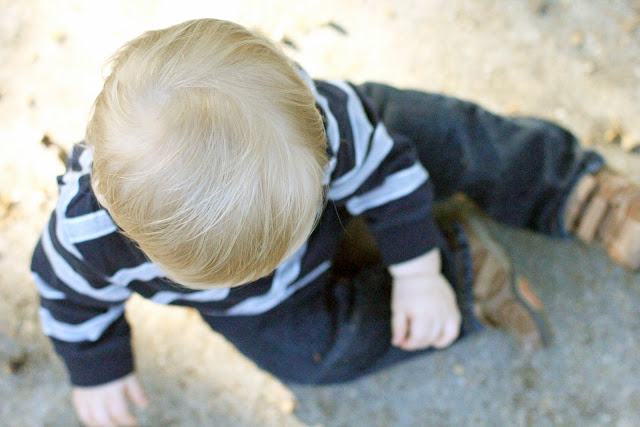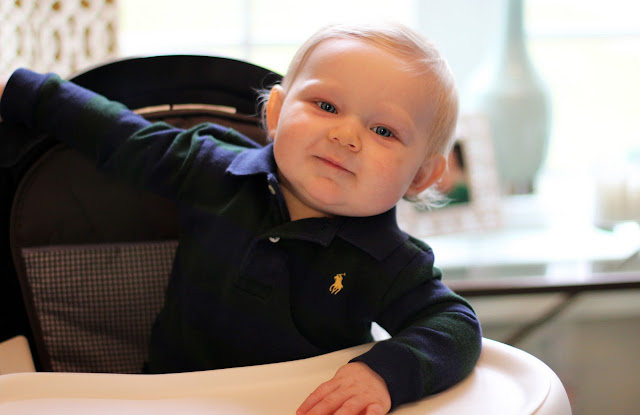Like I've said before, I'm an AMATEUR photographer.
I've never taken a class on photography, but I have learned a great deal online.
Today I'm sharing what I've learned from other
blogs, websites and books about photography.
So many of these references repeat the same tips over and over
and those tips have helped improve my pictures tenfold!!
At the end of this post, I'll share links to some of my favorite sites for
photography tips on exposure and editing.
Whether you have a simple point and shoot or a high dollar dslr, I hope
at least one of these tips that has helped me, helps you get the perfect shot!
Tip 1. Turn off that Flash!!: I think that is numero uno the best advice I ever read! I literally haven't taken a picture with a flash in months. Natural light is key to getting the best pictures possible. And no, my dear husband, I'm not talking about "Natty Light." Get outside!! Open up the drapes, roll up the blinds and let as much light in as possible!! Obviously, when taking pictures at night or in a dark room, a flash is mandatory. But just look at what a flash will do to your subject! It'll make his hair stand on end!
Tip 2. Get down to their level: Don't be afraid to get dirty!! Some of my favorite shots involve me laying on my stomach on the grass or the floor. Shoot from their perspective!
Tip 3. Practice, Practice, Practice!: That's the great thing about digital! It's cheap, cheap, cheap, and costs nothing to play around. Get to know your camera and try out the different settings your camera has to offer. If your'e thinking about upgrading to a dslr, try to get familiar with the settings on your point and shoot first. The basic rules of aperture, ISO and shutter speed still apply and if you don't know how to use the settings on your camera, get out that trusty manual!
 |
Tip 4. Use the internet to your advantage: There are multitudes of great blogs, sites, online
tutorials, videos, reviews and tips available for all levels of photography. Go to Pinterest and type
in the search engine "Photography tutorials" and your results are almost endless. Whether your'e
looking for a tutorial on how to master the art of backlighting in Photoshop or you're just looking
for a quick guide to the basic functions of your camera, you can find them all online. Study up and
get ready to READ!! Tip 5. Start editing your pictures: If your'e not up to learning all that there is to know about
Photoshop or Photoshop Elements, try out Picnik. Sometimes with just boosting the levels and
adjusting the lighting a tad, you can make a dramatic change to the photograph. I'm not getting too
much into depth on this subject though, because I could ramble all day. I use Photoshop Elements.
If you're going to take the plunge and work with Photoshop Elements, I highly, HIGHLY recommend
the book Photoshop Elements for Digital Photographers. It's a fantastic step-by-step guide! |
Here's what a little Photoshopping can do:
 |
Above is my straight-out-of-the-camera shot
(Often referred to as 'SOOC' on the tutorial blogs)
Below is the product of a little editing:
I boosted his eyes, brightened it up a tad,
rendered some lighting effects and converted it to black and white. |
 |
Above is my SOOC shot
Below is the edited version
I just brightened this one up a bit and
warmed up the color
(Eye boost too, of course) |
 |
Here's sweet Anna Wallace.
We shot these in low light so most of the photos were a bit underexposed. |
 |
Here's Anna Wallace after a little cropping and brightening!
So much better! |
Tip 7: Throw out all the rules and just shoot as many pictures as possible: If you've read tons
of material and are so confused about ISOs and shutter speeds that you don't know whether to scratch
your watch or wind your butt, you can do one famous trick that I do:
Set your camera to 'sports' mode and fire away. Sports mode on a Canon camera allows you to shoot without a flash at continuous shooting pace. That means you can hold down the shutter and fire off one picture after another. If your'e taking a bazillion pictures, you're probably going to end up with
quite a few keepers!
 Tip 8: Looking to upgrade?:
Tip 8: Looking to upgrade?: If you are looking to upgrade from a point and shoot to a dslr, I
highly recommend starting with a
Canon Rebel. I upraded to a
60D last spring and I love it, but I
miss my Rebel. They're affordable, lightweight and take excellent pictures. I also recommend
starting out with the
50 mm 1.8 lens (often referred to as the nifty fifty). If you have children, this one
is a must for children's photography.
It's fantasic in low light and if you're looking for a lens that will give you a cool blurry background--this
is the lens for you! My 50 mm RARELY comes off of my camera!
 |
Tip 9. It takes a village: Improvise whenever possible. I had to take Anna Wallace's pictures at
night so natural lighting wasn't a consideration. The above picture is a 'behind the scenes' shot of
what it took to get the right shot. She was a little fussy and wanted to be held so Lauren's mom
(draped in a bed sheet so she didn't end up in the picture) held her while Kristen adjusted her pose
and held a lamp with no lamp shade above for extra lighting. It's not easy!!! So if you're trying to get the perfect shot of your baby or tot, have someone lend
you a hand! |
Ok, so that's all I have!
I still have SOOOOO much to learn!
As promised, here are some EXCELLENT resources if your'e ready to learn much, much more,
explained waaaaaay better than I can tell you:
If anyone has any great resources for tips and tricks, send them my way!
Pioneer Woman If you know Ree Drummond for her cooking abilities and new cooking show....well, now you can add photography to the reasons why you know that name. She's not only a Pioneer woman,
she's a renaissance woman! Great blog for step-by-steps in Photoshop.
SLR Camera Simulator This site speaks for itself. Want to learn more about your camera functions? Your'e welcome in advance!
Happy Weekend Everyone!!
Get out that camera and start shooting!!








































































